#Per Nilsson
Explore tagged Tumblr posts
Text
Album Review: The Singularity Phase II - Xenotaph by Scar Symmetry (Nuclear Blast)
Scar Symmetry are back, at last, with the second part of their The Singularity trilogy, Xenotaph, due for release via Nuclear Blast on the 9th of June. The Swedish melodic death metal, technical, progressive and more band last released studio music way back in 2014 with the first part of this trilogy, The Singularity Phase I – Neohumanity. An album I absolutely love and the reason why I moan…

View On WordPress
#Benjamin Ellis#Henrik Ohlsson#Lars Palmqvist#Neohumanity#New Metal#New Music#Nuclear Blast#Per Nilsson#Roberth Karlsson#Scar Symmetry#scar symmetry review#The Singularity#The Singularity Phase II#The Singularity Phase II - Xenotaph#Xenotaph review
3 notes
·
View notes
Text
Per Nilsson ”fin positiv offensiv utveckling”
Torsby Fotboll har pratat med Per Nilsson efter 1-1 mot Arvika U. Hur ser din matchanalys ut? Vi börjar trevande och har det lite svårt i inledningen. Arvika kommer med ett ungt och rappt lag och löper mycket. Efterhand kommer vi in i det och tar över matchen. En match som är relativt fattig på målchanser. Dom tog ledningen men ni kvitterade tämligen omgående, viktigt innan halvtid? Ja men det…
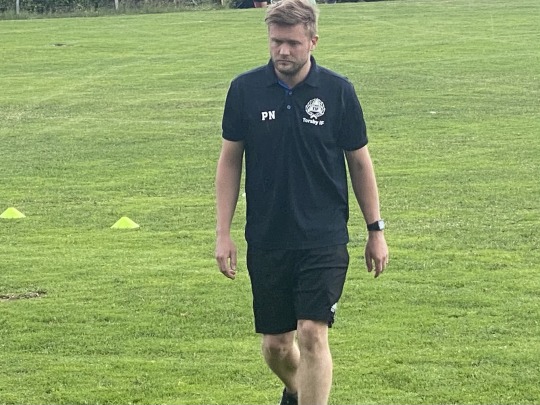
View On WordPress
0 notes
Text
youtube
This was for the Scar Guitar solo contest (didn't win of course lol)
Soloing over Scar Symmetry's "Chrononautilus"
#scarguitar2023 #guitarmessenger #scarsymmetry #xenotaph #guitar #guitarsolo #jacksonguitars
#electric guitar#guitar solo#guitar#music#metal#scarsymmetry#per nilsson#jackson guitars#acoustic guitar#Youtube
1 note
·
View note
Video
youtube
Eshtadur ft. Björn Strid, Per Nilsson & Allan Marcus - Burning Heart
Two worlds collide Rival nations It's a primitive clash Venting years of frustrations Bravely we hope Against all hope There is so much at stake Seems our freedom's up Against the ropes Does the crowd understand? Is it East versus West Or man against man Can any nation stand alone In the burning Heart Just about to burst There's a quest for answers An unquenchable thirst In the darkest night Rising like a spire In the burning heart The unmistakable fire In the burning heart In the warrior's code There's no surrender Though his body says stop His spirit cries - never! Deep in our soul A quiet ember Knows it's you against you It's the paradox That drives us on It's a battle of wills In the heat of attack It's the passion that kills The victory is yours alone In the burning Heart Just about to burst There's a quest for answers An unquenchable thirst In the darkest night Rising like a spire In the burning heart The unmistakable fire In the burning Heart Just about to burst There's a quest for answers An unquenchable thirst In the darkest night Rising like a spire In the burning heart The unmistakable fire In the burning Heart Just about to burst There's a quest for answers An unquenchable thirst In the darkest night Rising like a spire In the burning heart The unmistakable fire In the burning heart

0 notes
Text

KUNG FURY (2015)
Vu Le : Lundi 27 Janvier 2025
Durée : 31mn02s
Version : VOSTFR
Titre Original : Kung Fury
Interdiction : Tous Publics
Ma Note : 07/10
Le Lien :
La Bande-Annonce :
youtube
#Kung Fury#David Sandberg#Mitch Murder#Lost Years#Jorma Taccone#Steven Chew#Leopold Nilsson#Andreas Cahling#Erik Hornqvist#Per-Henrik Arvidius#Eleni Young#Helene Ahlson#Eos Karlsson#Magnus Betnér#Björn Gustafsson#David Hasselhoff#Frank Sanderson#Adrian Ciprian#Youtube
2 notes
·
View notes
Photo
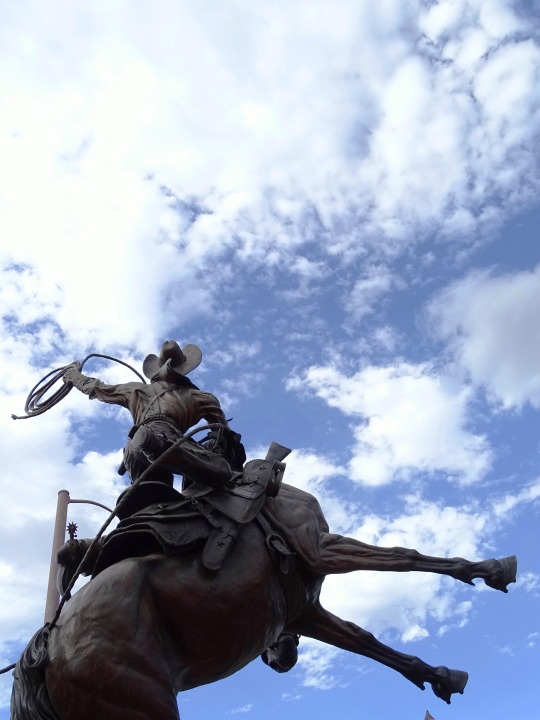

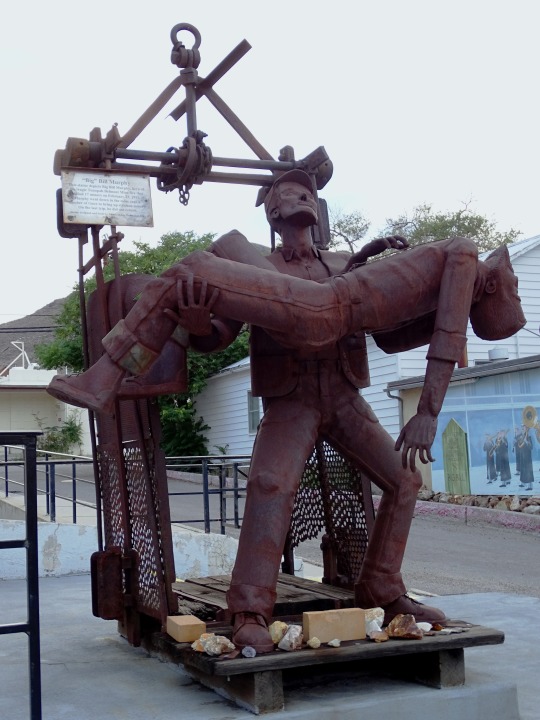
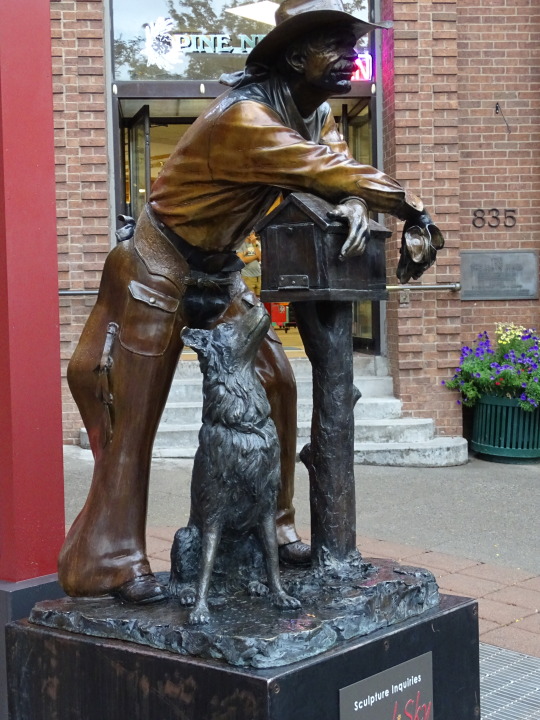
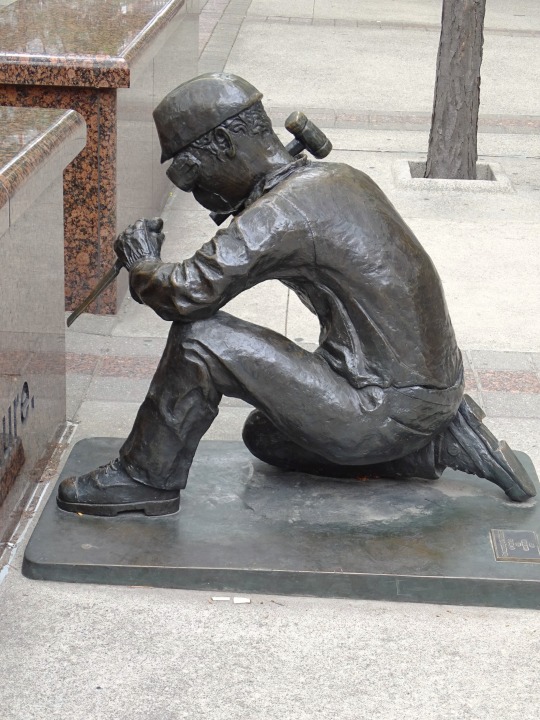
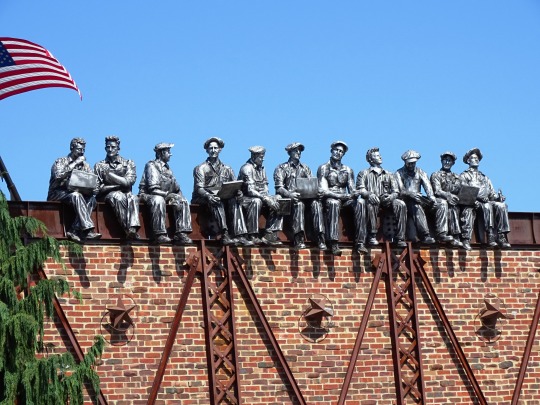


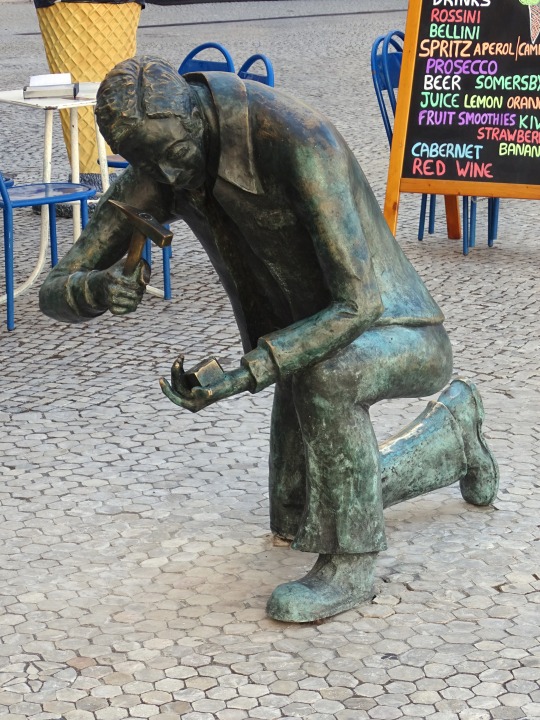
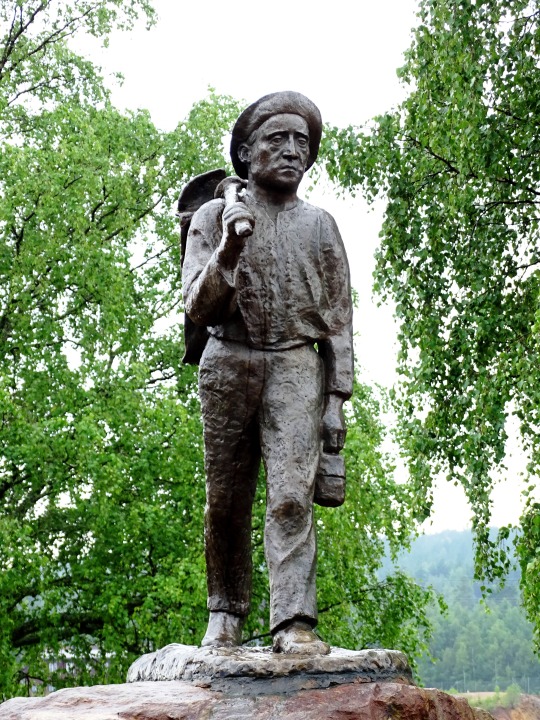
Workers Memorial Day
Workers’ Memorial Day is an international holiday marked on April 28 annually. It is observed to raise awareness of the importance of workplace safety, as well as commemorate all the workers who have lost their lives due to work-related illnesses and those whose lives have been put on hold due to injuries that have incurred while working. According to figures, the number of people who get killed at work is higher than those who lose their lives to wars and drug abuse combined! Labor unions around the world observe this day to remember their fallen heroes and discuss measures to ensure safe workplaces.
History of Workers Memorial Day
Although it only became widely popular when the U.S. first celebrated it on April 28, 1989, Workers’ Memorial Day had been celebrated several years before then by Canada on the same day. Perhaps, the unpopularity associated with Canada’s first observation can be credited to the fact that it was celebrated under a different, albeit similar name. Regardless of who first observed it though, the day was inspired by the signing of the Occupational Safety and Health Act into law in 1970 and the formation of the OSHA on April 28, 1971.
In the early years of the signing of the OSHA into law, the celebration of the Workers’ Memorial Day was centered in North America. The holiday only attained international recognition in the last parts of the 20th and the beginning of the 21st centuries. In 1985, the Canadian Labor Congress pronounced April 28 as an annual day of remembrance — which is the anniversary of a Workers’ Compensation Act signed as far back as 1914. Progressively, the American Federation of Labor and Congress of Industrial Organization (A.F.L.-C.I.O.) declared April 28 as Workers’ Memorial Day to honor the thousands of people who have been injured or lost their lives on their jobs. The U.K. followed suit with their celebration in 1992.
Since the adoption of the holiday by the International Labor Organization (I.L.O.) in 2001, many countries are now actively participating in observing it, with some deeming it fit to confer the holiday a public holiday status. Furthermore, to add value to the holiday, from 1996, annual themes began to be assigned to each year’s celebration of the day.
Workers Memorial Day timeline
1971 OSHA is Formed
The Occupational Safety and Health Administration (OSHA) is formed.
1989 A.F.L.-C.I.O. Declaration
The American Federation of Labor and Congress of Industrial Organizations declares April 28 as Workers' Memorial Day.
1992 Introduced in the U.K.
Tommy Harte introduces Workers' Memorial Day in the U.K.
1996 Themes Begin to Be Set
The I.C.F.T.U. begins to set annual themes for each Workers' Memorial Day.
2001 New Declaration
An agency of the United Nations — I.L.O. — recognizes Workers' Memorial Day and declares it World Day for Safety and Health at Work.
Workers Memorial Day FAQs
What does a labor union do?
Among many other things, labor unions are charged with fighting for the betterment of their workers’ welfare, remunerations, and all things needed for them to work in a favorable environment and for decent financial gratification. Generally, labor unions serve as mediators between their members and authorities. Their impacts have been felt by both employees and employers over the years.
Is a labor union a good thing?
It is. This is evident in the many advantages and privileges unionized workers get over their non-unionized counterparts. Most significant changes in employees’ welfare and safety were achieved through the struggles of labor unions. They do have their setbacks though.
Why do people not like unions?
Most governments and employers detest labor unions because of their strong affection for riots and strike actions. To the unions, those two are the most effective languages employers understand, and many a time, they do succeed in pressing home their demands with the employers.
How to Observe Workers Memorial Day
Inform the public about work safety
Strive for a safer environment at work
Honor the memories of fallen workers
Go out there and educate the public on the importance of staying safe while at work. Also, tell them the possible risks associated with their various works.
If you are working in an unsafe or potentially dangerous environment, get people to rally behind you and ask for a safer work environment from your employers. You might just be a cause for a good change.
Be it a close relative, friend, acquaintance, or stranger, honor the memories of those fallen heroes, who died in the cause of their works. Pay tributes to them or their loved ones.
5 Interesting Facts About Workers’ Memorial Day
It was first celebrated in Canada
It was unpopular at first
America made it popular
It became international
It's a public holiday in Gibraltar
Canada was the first country to mark it although under a different but similar name.
The event was first known but not quite as popular as it became in the later years.
It only began to be widely recognized when the U.S. marked it.
A host of country trade unions in Europe, Asia, Africa, Australia, and elsewhere observe it.
While it is simply a national holiday in other countries, it is a government-free public holiday in Gibraltar.
Why Workers Memorial Day is Important
It reminds us of successful struggles
It increases the unity between workers worldwide
It gives workers a more amplified voice
Workers' Memorial Day reminds us of how effective calling out to authorities for good changes can be. By doing so, we may be able to save someone's life.
Whichever continent you happen to be from and whichever race you belong to, this day increases the bond and unity between workers in achieving a common goal. We love this!
Workers around the world use the day to loudly voice out their work environment and other pressing demands. Considerate employers, on the other hand, listen to the demands.
Source
#Chicos and Capulin by David Montgomery#Bad Decision by Vic Payne#USA#Big Bill Murphy by Adam Skiles#Waiting on an Answer by George Lundeen#travel#Anonymity of Prevention by Derek Lo and Lana Winkler#Canada#public art#Standing Together by John Greer#Monument to the Calceteiro by Sérgio Stichini#Portugal#Sweden#Gruvabetaren by Helge Zandén#Strömmingsfiskaren by Per Nilsson-Öst#28 April#Workers Memorial Day#WorkersMemorialDay
2 notes
·
View notes
Text
So I’m not quite finished with this yet. My adult job has amped up, and there’s been therapy and moving and what not.
Hoping to finish soon but a quick update thus far:
Each chapter starts with context by Faxneld, Nilsson, or another subject matter expert on that figure. It sets out to tell the life of the author, give context setting, and let the reader know the intended audience of the work and how it fits in. If there is criticism to level at the author, they level it in this section. Then it moves to an excerpt of the work to give the reader a sampling.
The book is laid out in chronological order for the reader, and each chapter is also full of its own sources and citations. Im eager to finish but highly suggest for anyone wanting to get an academic perspective on how Satanist thought took shape in the eyes of historical studies.

So something I struggle with as a former academic on this path is craving academic, evidence based texts that help give context to the different movements, thoughts, and ideas within the Satanist milieu. Many books are without citations or are outright wrong, and have a specific goal of turning a reader towards their way of thought and only their way of thought. On the other hand, many academic texts are not sympathetic to Satanists and promote outright propaganda against the milieu. They are not worshippers themselves or think negatively of practitioners.
So I was pleased that Per Faxneld and Johan Nilsson, both prominent historians of new religious movements and in particular those associated with Satanism, published this new book.
It’s very historical so I can’t recommend going into it and expecting to learn a new practice or prayer - but it provides historical context for how Satanist thought developed through the 1840s to the present. It neither persuades you for nor against it but merely provides actual evidence for how ideas came to be and who the source of those ideas are.
I’m about 3 chapters in and excited to read more. I’ll share more thoughts and learnings when finished!
#satanism#luciferian#theistic luciferianism#theistic satanism#lucifer#devil#per faxneld#Johan Nilsson
195 notes
·
View notes
Text

The moment a trout swallows a mayfly moments before the surface tension is broken.
Pers Anders-Nilsson
seasoflife
78 notes
·
View notes
Note
hey... what do you make of just like starting over and real love? do you think theyre rlly about paul? i think they are, but i struggle to believe john was finally making up his mind like that
Paul almost certainly thinks that (Just Like) Starting Over is about him. He purportedly listened to it on repeat for days right after John died and then there's the "walrus" referenced in the first draft of the lyrics, as well as the line about making love in Paris. I absolutely believe that Paul is the primary recipient of (Just Like) Starting Over.
I don't think it was John making up his mind per se...I think it was more like, John was unhappy with how he had left things with Paul and he was feeling optimistic about their future, so long as they stayed the course and renewed their love. However John is still John, he reached out to May Pang the same year and reconnected with a bunch of people out of the blue. Which is to say that yes, he did want to renew things with Paul and patch things up with him. But he also prepared some back ups in case that didn't work out for him. I think it was Harry Nilsson that received a middle of the night phone call from John where John was really warm to him after being out of touch for years. (Just Like) Starting Over was written with Paul as its true object and in John's heart of hearts I believe he wanted to make a new bond of love with Paul, but I also think that it is written as such that John could tell any of his old flames that "this one's for you" and mean it.
Which brings us to Real Love, I think that Real Love is also intended to be about Paul. However Real Love is a lot older and to quote a random twitter user I saw when Now and Then dropped, "it's another Lennon misery fest." When John wrote the beginnings of Real Love he certainly had Paul on his mind (hence the "lalalala farm" bit in the initial "Real Life" noodling around.) Whatever was going on with John staying in the Dakota, he was clearly longing for Paul and desperately wished things were different. But Real Love lacks the hopeful and anticipatory tone of (Just Like) Starting Over. I think John wanted to do more with Paul than sit in a studio with him again IYKWIM.
Real Love feels a lot more like an expression of John's regrets and how he wished things were different, that he had gone a different way. It actually strikes me as more of a venting song than something John really wanted to polish and bring to the public, "why must we be alone?" is a question John seems to have been asking himself through out the Dakota years. He put himself in this position and he is trying to understand why he did it to himself, even asking seemingly silly and pointless questions like "why am I so alone, why isn't Paul here with me, didn't I hold him in my arms just yesterday?" ('Yesterday' again....I said something wrong now he's gone away....and I don't believe in Yesterday myself....I never wished I had written it....now I long for yesterday....)
But when you're making vent art you don't ask yourself sophisticated questions, you ask yourself really obvious ones that you know the answer to but you've been scared to answer fully because it means accepting that you've known this entire time and haven't done anything about it. The Real Life demo we have ends with "just call him on the phone."
(Just Like) Starting Over is John making his first steps towards a new future that he wants Paul to be a part of while still being uncertain about what that entails. Real Love is John coming to grips with the scale of his loss and bewilderment at how he got here, the intervening years between his successful love affair with Paul vs the drug addled years in the Dakota being a smeared blur.
I don't think John had necessarily made up his mind about Paul. More like he realized his relationship with Yoko had run its course (whether he knew she was a parasite is another question.) That was his chance to be with Paul again.
58 notes
·
View notes
Photo

On the set of 33 1/3 Revolutions Per Monkee, November 1968. Peter leaving The Monkees, post 1 of 3.
Tom Snyder: “Why did it all break up?” Micky Dolenz: “Well, Peter Tork quit. That was the main reason.” Davy Jones: “Well, he withdrew, he actually withdrew. He didn’t just quit, there was, there was a reason for it. He was not being artistically satisfied in certain ways. And we were, as I said, Micky and I, had done other things before and so we were used to taking the directions. So when it come down to other people, forgetting that Carole King and Neil Diamond and Harry Nilsson, Neil Sedaka wrote all the tunes — and Mike and Peter also did, but they never got the chance really to put any down in the early days. They decided that they wanted to do more music and Peter was the first one. He withdrew, and said that he would prefer to try it on his own so he could do more of what he likes best, which is music.” MD: “They’d been promised, Mike and Peter had been promised that they would be able to express themselves musically because they were from a musical background. Peter had been in New York, in the Village, come through that scene with the Mamas and Papas and Lovin’ Spoonful. And he’s a genius, the man is a genius at music. As I said, Peter was — and is — a genius in music. And he got very frustrated because he wasn’t able to satisfy himself creatively. And Mike felt the same way." - Tomorrow with Tom Snyder, 1977
"We never thought of replacing him — there’s only one Peter Tork in the world. Who knows, maybe in two or three years’ time he’ll come back?” - Michael Nesmith, Melody Maker, March 1, 1969
"'Of all of us, I was the one who took the most pain,’ Tork said. 'But looking back, I think it was misplaced idealism that caused me that pain, not the actual phenomenon — the thing that Michael Nesmith calls "the artifact." 'As a musician, I feel extremely lucky that we got to make one album, Headquarters, that was exactly the album I hoped to make.’" - The Charlotte Observer, May 31, 1997
“I didn't have a band. I wanted this kind of connection and I didn't get it, so I felt it was up to me to leave." - Peter Tork, The Guardian, April 28, 2011
#Peter Tork#Davy Jones#Micky Dolenz#Michael Nesmith#Tork quotes#long read#60s Tork#The Birds The Bees & The Monkees#33 ⅓ Revolutions Per Monkee#The Monkees#Monkees#Peter deserved better#Tork songs#1968#1960s#Peter and Davy#Peter and Micky#Peter and Michael#fits queue like a glove
134 notes
·
View notes
Text
panilssonphoto | Per-Anders Elof Nilsson
(PA Nilsson, Photographer in love with ballet, high fashion and bodybuilding.)
@panilssonphoto & New account @panilssonfotografi
A blast from the past with one of my absolute favourites ”Alone in the spotlight in colour”
Muse: @luizalopesofficial
Mua: @pollys.artistry
instagram

#panilssonphoto#per-anders elof nilsson#photographer from stockholm#pa nilsson#@panilssonphoto#@panilssonfotografi#Instagram#ballet#ballerina
12 notes
·
View notes
Text
Per Nilsson ”Spelmässigt är matchen ganska jämn”
Torsby Fotboll har pratat med Per Nilsson efter förlusten mot Rottneros IK. Hur analyserar du dagens match? Spelmässigt är matchen ganska jämn. Men vi är inte helt på tå idag, framförallt inte defensivt. Rottneros får göra alldeles för enkla mål. Efter 3-1 tappar vi mycket energi och vi trappade av. Fortsatt svårt att få med en hel matchtrupp på grund av skador? Ja och nästa helg kommer det bli…

View On WordPress
0 notes
Text

"Ballerina in the spotlight" by Per-Anders Nilsson.
2 notes
·
View notes
Text
Carolina Östberg was one of the most famous and beloved singers of all on the Swedish opera stage during the last decades of the 1800s.
Carolina Östberg was born in Stockholm in 1853. She was the daughter of the master barber surgeon Johan Ludvig Östberg and Beata Ulrika Wallberg. Even as a child, Carolina Östberg showed that she was naturally musically gifted. It was however not until she was about 16, and accepted as a pupil at the Royal Swedish Academy of Music, that she was given the opportunity to develop this talent further. Carolina Östberg studied Christina Nilsson’s and Zelia Trebelli’s singing methods thoroughly when they visited Sweden, but she considered that she had her singing teacher, Professor Joseph Günther, to thank for her highly developed singing technique.
After three years of studies, she made her stage debut at the Royal Theatre, nowadays the Royal Opera in Stockholm, when she entered the great stage in the role of Anna in the opera Der Freischütz, on 15 December 1873. The critics wrote that this unusually talented debutante had a soprano voice with a fresh, clear and pure timbre and that she also showed evidence of careful training in coloratura. The year after, she had yet another achievement in the male role Carlo Broschi in Daniel Auber’s opera La Part du Diable, and was given a contract. During her three years at the Royal Theatre, she created important Mozart roles such as, among others, Susanna in Le Nozze di Figaro and Papageno and one of the genies in Der Zauberflöte. For each new performance, Carolina Östberg won ever greater recognition from critics and audiences alike.
When her contract ended in 1877, Carolina Östberg planned to educate herself further in St Petersburg. However, the journey was cancelled since instead she married the wholesale dealer Moritz Horwitz the year after, and chose to leave the stage to the audience’s great disappointment, apparently permanently. The prevailing period of depression in Sweden meant however that her husband’s income was very meagre. Carolina Östberg decided to return to the stage once more. Her unexpected return in 1879 as the title role in Franz von Suppé’s operetta Boccaccio on the stage of Nya teatern was such a roaring success that it created total Boccaccio-fever in the capital. The acclaimed performance sold out time and again and Carolina Östberg was paid a staggering fee of 100 kronor per evening. Her engagement at Nya teatern lasted until 1885 and she played the main role in among other works Charles Lecocq’s opera Le Petit Duc, Madame Favart by Offenbach, and Charles Grisart’s Les Poupées de l’Infante. During her years at the theatre, Carolina Östberg gave guest performances at many other theatres, for example in Denmark in 1880, Germany and the Netherlands in 1882—1883 and Norway in 1885.
When Carolina Östberg once again was given a contract at the Royal Theatre in 1886, this was considered a triumph for the audience who had demanded her return to the great dramatic stage for a very long time. Apart from a break for touring America in 1892—1894, Carolina Östberg belonged to the permanent ensemble at the Royal Theatre until 1906 when she resigned to work as a private singing teacher, an enterprise that she had carried on parallel to the theatre for several years.
In 1897, Carolina Östberg was elected to be a member of the Royal Swedish Academy of Music. She was awarded the medal Litteris et Artibus in 1891 and on King Oscar II’s birthday in 1900, Carolina Östberg received from his hand the unusual medal Litteris et Artibus decorated with diamonds. Carolina Östberg was a member of Idun’s women’s academy for a while, along with – among others – Selma Lagerlöf, Agda Montelius and Karolina Widerström.
Carolina Östberg died on 27 February 1924. She lies buried at the Northern Cemetery in Solna. Her voice has been preserved on nine gramophone recordings from 1905.
#classical music#opera#music history#bel canto#composer#classical composer#aria#classical studies#maestro#chest voice#Carolina Östberg#singing teacher#Royal Swedish Opera#Le Nozze di Figaro#Wolfgang Amadeus Mozart#The Marriage of Figaro#soprano#classical musician#classical musicians#classical history#history of music#historian of music#musician#musicians#diva#prima donna#opera history
6 notes
·
View notes
Text
The Signs and their Eurovision winners
Here we are again, with just one new name this time, but one for a rarely seen sign for once 👀
♈ Aries: Agnetha Fältskog (ABBA, 1974), Ard Weeink (Teach-In, 1975) Lee Sheridan (Brotherhood of Man, 1976), Elisabeth Andreassen (Bobbysocks, 1985), Céline Dion (1988), Nenad Nakić (Riva, 1989), Linda Martin (1992), Rolf Løvland (Secret Garden, 1995) Katrina Leskanich (Katrina and the Waves, 1997), Nils Olsen (Olsen Brothers, 2000), Sergei Morgun (2XL, 2001) Duncan Laurence (2019)
♉ Taurus: Teddy Scholten (1959), Jacqueline Boyer (1960), Jørgen Ingmann (1963), Björn Ulvaeus (ABBA, 1974), Marie Myriam (1977), Johnny Logan (1980 and 1987), Jay Aston (Bucks Fizz, 1981), Emilija Kokić, Dalibor Musap AND Zvonimir Zrilić (All Riva, 1989), Paul Harrington (1994), Alexander Rybak (2009), Victoria de Angelis (Måneskin, 2021), Oleh Psiuk and MC KylymMen (both Kalush Orchestra, 2022)
♊ Gemini: Grethe Ingmann (1963), Anne-Marie David (1973), Salomé (Spain, 1969), Koos Versteeg (Teach-In, 1975), Kaido Põldma (2XL, 2001), Ruslana (2004), Lena Meyer-Landrut (2010), Eldar Qasımov (Ell & Nikki, 2011), Måns Zelmerlöw (2015)
♋ Cancer: John Gaasbeek (Teach-In, 1975), Toto Cutugno (1990), Amen and OX (both Lordi, 2006)
♌ Leo: Isabelle Aubret (1962), Massiel (1968), Vicky Leandros (1972), Per and Richard Herrey (Herreys, 1984), Bobby Gee (Bucks Fizz, 1981), Marie N (2002), Nemo (2024)
♍ Virgo: Dana (1970), Boško Colić (Riva, 1989), Carola (1991), Fionnuala Sherry and Hans Frederik-Jacobsen (Secret Garden and Co, 1995), Indrek Soom (2XL, 2001), Nigar Jamal (Ell & Nikki, 2011), Jamala (2016)
♎ Libra: France Gall (1965), Udo Jürgens (1966), Séverine (1971), Chris de Wolde (Teach-In, 1975), Smulik Bilu (Milk and Honey, 1979), Sandra Kim (1986), Åsa Jinder (Secret Garden and Co, 1995) Vince de la Cruz (Katrina and the Waves, 1997), Charlotte Nilsson (1999), Loreen (2012 and 2023), Ethan Torchio (Måneskin, 2021), Sasha Tab and Vitalii Duzhyk (Kalush Orchestra, 2022)
♏ Scorpio: Jean-Claude Pascale (1961), Frida Boccara (France 1969), Lulu (UK, 1969), Anni-Frid Lyngstad (ABBA, 1974), Rudi Nijhuis (Teach-In, 1975), Reuven Erez (Alphabeta, 1978), Nicole (1982), Corinne Hermès (1983), Louis Herrey (Herreys, 1984), Tanel Padar (2001), Marija Šerifović (2007), Conchita Wurst (2014)
♐ Sagittarius: Corry Brokken (1957), André Claveau (1958), Gigliola Cinquetti (1964), Benny Andersson (ABBA, 1974), Martin Lee, Nicky Stevens AND Sandra Stevens (all Brotherhood of Man, 1976), Reuven Gvirtz (Milk and Honey, 1979), Mike Nolan (Bucks Fizz, 1981), Charlie McGettigan (1994), Eimear Quinn (1996), Kimberley Rew (Katrina and the Waves, 1997), Sertab Erener (2003)
♑ Capricorn: Esther Tzuberi (Alphabeta, 1978), Gali Altari (1979), Aleksandra Kalafatović (Riva, 1989) Dima Bilan (2008), Salvador Sobral (2017), Damiano David and Thomas Raggi (both Måneskin, 2021), Ihor Didenchuk (Kalush Orchestra, 2022)
♒ Aquarius: Yehuda Tamir (Milk and Honey, 1979), Hanne Krogh (Bobbysocks, 1985), Niamh Kavanagh (1993), Gunnhild Tvinnereim (Secret Garden and Co, 1995), Dana International (1998), Dave Benton (2001), Helena Paparizou (2005), Mr Lordi and Kita (both Lordi, 2006), Netta Barzilai (2018), Tymofii Muzychuk (Kalush Orchestra, 2022)**
♓ Pisces: Lys Assia (1956), Sandie Shaw (1967), Lenny Kuhr (Netherlands, 1969), Getty Kaspers (Teach-In, 1975), Yizhar Cohen (1978), Cheryl Baker (Bucks Fizz, 1981) Jørgen Olsen (Olsen Brothers, 2000), Lauri Pihlap (2XL, 2001) Awa (Lordi, 2006), Emmelie de Forest (2013)
UNKNOWN: Lisa Gold-Rubin*, Itzhak Okev and Nehama Shutan* (all Alphabeta, 1978), Alex Cooper (Katrina and the Waves, 1997)
*I did uncover some information regarding Lisa Gold-Rubin and Nehama Shutan which would make them Pisces and Leo respectively, however I was unable to confirm whether they were the actual Eurovision performers or whether they just happened to share the same names. The lead for Gold-Rubin is stronger... but still unconfirmed 😅
**Some sites list Tymofii's birthday as being in September, however his actual Ukrainian Wikipedia page shows it as February 6th, so that's what I'm going with
Corrections/additional information welcome!
#Cancerian winners continue to be an endangered species#Baby Lasagna could have joined them but alas#Then again so could've gjon's tears#And daði freyr#And sam ryder#Damn there's a few misses looking into it#Eurovision#Esc winners
3 notes
·
View notes
